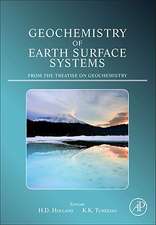Advances in Microbial Ecology: Advances in Microbial Ecology, cartea 16
Editat de Bernhard Schinken Limba Engleză Hardback – 30 iun 2000
| Toate formatele și edițiile | Preț | Express |
|---|---|---|
| Paperback (1) | 640.55 lei 6-8 săpt. | |
| Springer Us – 30 sep 2012 | 640.55 lei 6-8 săpt. | |
| Hardback (1) | 644.30 lei 6-8 săpt. | |
| Springer Us – 30 iun 2000 | 644.30 lei 6-8 săpt. |
Preț: 644.30 lei
Preț vechi: 758.01 lei
-15% Nou
Puncte Express: 966
Preț estimativ în valută:
123.28€ • 128.73$ • 101.80£
123.28€ • 128.73$ • 101.80£
Carte tipărită la comandă
Livrare economică 15-29 aprilie
Preluare comenzi: 021 569.72.76
Specificații
ISBN-13: 9780306461750
ISBN-10: 0306461757
Pagini: 300
Ilustrații: XIII, 281 p.
Dimensiuni: 155 x 235 x 22 mm
Greutate: 0.53 kg
Ediția:2000
Editura: Springer Us
Colecția Springer
Seria Advances in Microbial Ecology
Locul publicării:New York, NY, United States
ISBN-10: 0306461757
Pagini: 300
Ilustrații: XIII, 281 p.
Dimensiuni: 155 x 235 x 22 mm
Greutate: 0.53 kg
Ediția:2000
Editura: Springer Us
Colecția Springer
Seria Advances in Microbial Ecology
Locul publicării:New York, NY, United States
Public țintă
ResearchCuprins
1 Achromatium oxaliferum: Understanding the Unmistakable.- 1. Historical Introduction.- 2. Phylogeny of A. oxaliferum.- 3. Morphology and Ultrastructure.- 4. The Habitat of A. oxaliferum.- 5. Physiology and Biogeochemical Role.- 6. Conclusions.- References.- 2 Bacterial Manganese and Iron Reduction in Aquatic Sediments.- 1. Introduction.- 2. Iron and Manganese in Aquatic Sediments.- 3. Manganese- and Iron-Reducing Microorganisms in Culture.- 4. Microbial Manganese and Iron Reduction in Sediments.- 5. Summary.- References.- 3 Plant-Associated Methane Oxidation in Rice Fields and Wetlands.- 1. Introduction.- 2. The Global Balance: Methanogenesis and Methanotrophy.- 3. The Environment: Flooded Soils and Wetland Plants.- 4. Methane Oxidation: Organisms, Physiology, and Activities.- 5. Conclusion.- References.- 4 Heterotrophic, Planktonic Bacteria and Cycling of Phosphorus Requirements, Competitive Ability, and Food Web Interactions.- 1. Introduction.- 2. Models for Predicting Growth Rate and Competitive Ability of Phosphorus-Limited Planktonic Bacteria.- 3. Kinetic Characterization of Heterotrophic Bacteria.- 4. Comparison of the Competitive Ability of Heterotrophic Bacteria, Planktonic Algae Cyanobacteria.- 5. The Role of Heterotrophic Planktonic Bacteria in Phosphorus Cycling in the Photic Zone of Lakes.- 6. Conclusions.- References.- 5 Ecological Aspects of Biological Phosphorus Removal in Activated Sludge Systems.- 1. Introduction.- 2. Functions of Poly-P.- 3. Biosynthesis and Degradation of Poly-P.- 4. Phosphate Transport in Acinetobacter johnsonii 210A.- 5. Biological Phosphorus Removal.- 6. Summary and Outlook.- References.- 6 Effect of Chirality on the Microbial Degradation and the Environmental Fate of Chiral Pollutants.- 1. Introduction.- 2. Historical Background.- 3. Biological Macromolecules of Homochiral Monomers.- 4. Chirality and Biological Activity.- 5. Microbial Degradation and Environmental Fate of Chiral Pollutants ….- 6. Conclusion.- References.- 7 Complex Adaptive Systems Ecology.- 1. Introduction.- 2. SCIO Revisited.- 3. Physiology.- 4. Ecology.- 5. Evolution.- 6. CASE and the Evolutionary Dynamics.- References.















